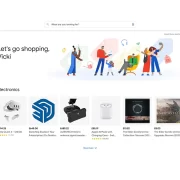You know how you read “Content is King” everywhere?
Well, it’s true.
Basically, for three main reasons:
a. Shows thought leadership in your respective field.
b. It’s great for your online footprint. You can include it on your website or third-party websites (that are always interested in publishing interesting content). You can use snippets of it to promote the post, and your brand, on social media, create Twitter storms, posts on LinkedIn, and push on platforms like Reddit or forums specialising in your domain.
c. Content on your website that renews often, will help you appear more often on search engines. Taking search engine optimisation into consideration and writing for many different, but relevant keywords, will also help you get more organic impressions by search engines like Google. Obviously, writing a single article for a relevant keyword is not enough. You have to come back and keep producing multiple engaging posts for the same keyword.
Who Will Write?
So how do you begin creating a Content Strategy for your website? We’ll actually start with the most difficult part of it. Finding someone to write it. As a marketing agency, we take a two-prong approach:
POSSIBILITY 1: Find at least one person on the company team who is great at writing content and is also willing. Then, try to convince the boss that they need to give them the time and space to write. If we find more than one person, then we’ve hit the jackpot! But as with all jackpots, that’s almost improbable. Even one person is difficult, and usually because the people who know what they should be writing about don’t have the time to put in the effort. So we usually resort to our next suggestion.
POSSIBILITY 2 (more probable): Ask someone on the team to write down, usually on half a page, the main talking bullets they think the article should include. We’ve found that this is a better approach, and clients find it easier to work on. Then you can use a service like WriterAccess or Upwork to find writers that can work with the brief. Once the article is ready, the client can review, add, edit, or remove content.
Creating a Content Strategy
- Find who will do the actual writing.
- Define your target audience. You need to know whom you’re writing for if you want your content to resonate with your audience.
- Research which keywords people are searching for. You will need these to include them in your article. Keep in mind that you shouldn’t be limited to single-phrase keywords. It could be a whole sentence. Although the best tools for this job have a hefty subscription(e.g. Semrush), there are a few free tools you can utilise. The Google Ads keyword planner will help you get a feeling of where companies are putting their money, while Moz’s Keyword Search tool is better suited but available free for a 30-day trial period. Meanwhile, one of our favourite that we use often is Google’s search input field. Start writing, in the search field, the keywords you believe are relevant and see how Google predicts what you’ll write next. These predictions come from actual searches. Not the best solution, as it will need time to go through many keywords, but it can help you get started.
- Create a content calendar but keep in mind that it will be difficult to stick with it. We suggest you start by setting simpler goals, like 3 posts a month. Don’t limit yourself when it comes to types of posts. These could be your typical written article, but they could also be a video, an infographic, a podcast, a review of an event you attended, an opinion piece about a third-party article you read that is relevant to your work. Diversifying the type of content will also help with user engagement.
- Upload your content on your website. Make sure it’s optimized; use a SEO plugin (e.g. Yoast) to help you work on search engine optimization. Also, keep in mind that pictures make your content look better. Use free stock photography or buy a 10 images/month subscription on a platform like Shutterstock to download some awesome images; it’s worth the investment.
- Promote your content on social media. Also, consider re-posting the whole post on platforms like Medium or LinkedIn, clarifying where the initial edition has been published.

A Trick We Use at Digital Giraffes
Staying motivated is the key factor here. It’s not easy to sit down and say, “now I will write an article….what should I write about?” and think you’ll have three or four bright ideas, and it will be easy-peasy. What we do for each client is create an ideation spreadsheet. Each time an idea pops up, someone says something interesting, or we read an article we think would be interesting for our client to tackle, we add it to the spreadsheet. That way, we never run out of ideas for posts.
We actually show the spreadsheet to our clients, during meetings, in an effort to inspire them to write. Most of the time, it helps them ideate further and come up with new subjects, or they just pick up the topic we’ve written and build a brief with key bullets to be used by our professional writers.
Real-World Examples of Content Ideation
Before we wrap it up, we’d like to share some ideas on topics for two types of companies. One is an online B2B brick-and-mortar store that sells construction and renovation materials, while the second is a machine learning platform that caters to life scientists. These are examples and we hope they can get you thinking about subjects that suit your brand.
Construction materials e-shop | ideas for articles
- Sustainability in construction: Write about sustainable construction practices and how your products can be used to create more environmentally-friendly buildings. Discuss recycled materials, energy-efficient insulation, and alternative materials.
- Trends in construction: Keep your audience up-to-date with the latest trends in the construction industry. Include new building materials, emerging technologies, or changing building codes and regulations.
- Customer success stories: Share stories from satisfied customers who have used your products to complete successful building projects.
- Professional or DIY projects: While DIY projects are not your typical subject for construction professionals, it could be a fun way to inspire others and help build trust in your brand. Write about simple projects or, even better, get one or two of your clients to share knowledge on bigger projects or simple how-to facts. Any information that is spreading the knowledge could be useful. Some of these could also be used as bite-size content for your newsletter. Sharing the name of the professional could also be seen as an advantage for them making them more willing to share knowledge.
- How-to guides: Provide step-by-step guides on how to use your products to complete specific building projects. This could include topics such as installing drywall, laying tile, or building a deck. These are great posts and very useful when you’ve run out of time or inspiration to write something else. You have the knowledge in your head….share it!
Machine learning platform that caters to life scientists | ideas for articles
- Real-world case studies: Share examples of how your platform has been used by researchers or companies to solve unique and challenging problems. This will help potential customers understand the capabilities of your platform.
- Machine learning for social good: Highlight how machine learning can be used to solve health and personalized medicine challenges. For example, showcase how your platform can speed up biomarker discovery for a specific disease.
- Data ethics and privacy: Discuss the privacy considerations surrounding data collection, usage, and storage. Help businesses understand how they can stay compliant with privacy regulations.
- Democratizing machine learning: Discuss how your no-code platform is making machine learning accessible to a wider range of businesses and individuals. Focus on the positive impact this can have on innovation and problem-solving.
- The future of your platform: Showcase how your platform will evolve over the years, how it will be able to analyze other types of data like medical images, with which other popular tools it may integrate, and how it will provide even more value to users.
Content creation needs consistency. Begin, adapt, and stick with a methodology that will help you stay consistent. Whether that includes hiring a writer, a service, or writing it yourself, what matters is creating new content every month. Read other writers and emulate what you loved, including topics, writing style, or topic approach. Never give up… we promise it gets easier with time.
Keep on reading...

Maximizing ROAS Through Measurable Marketing: A Guide for Small Business Owners
Maximizing ROAS through measurable marketing is not just about spending more but spending smarter. By avoiding common mistakes, debunking myths,

Riding the Pros and Cons of Integrating ERP Systems with E-commerce Platforms
ERP e-commerce integration refers to the process of connecting an e-commerce platform (e.g. WooCommerce) with an ERP system. This allows



